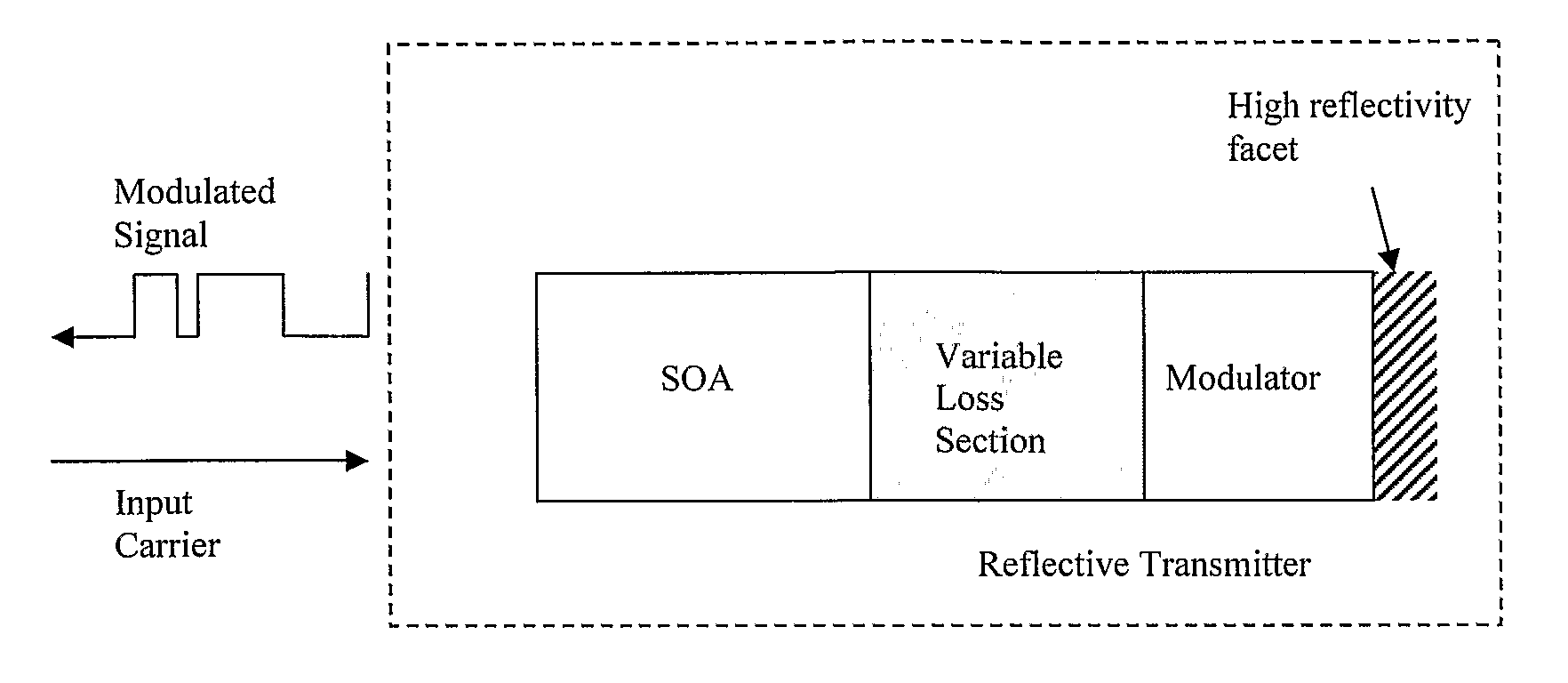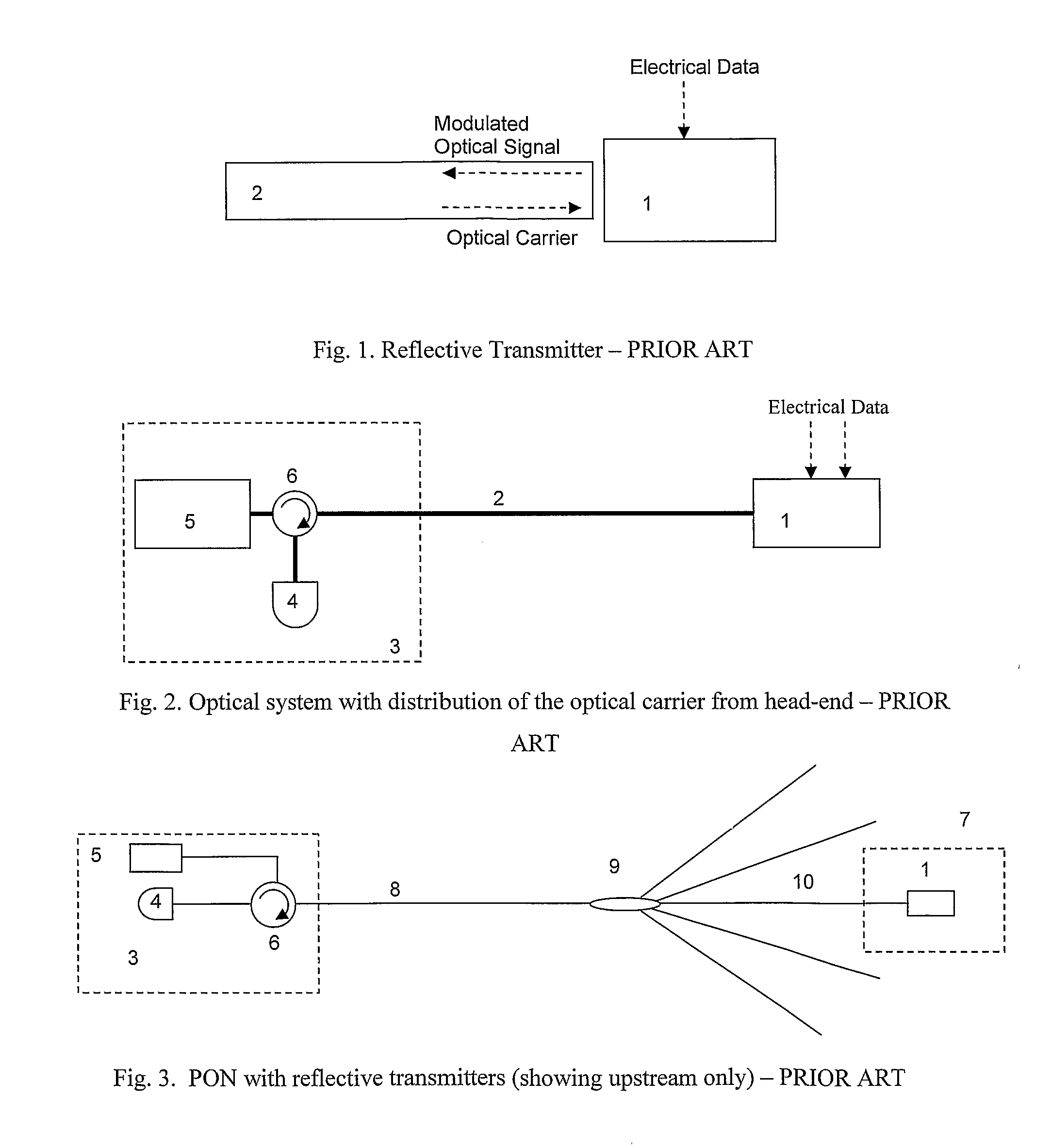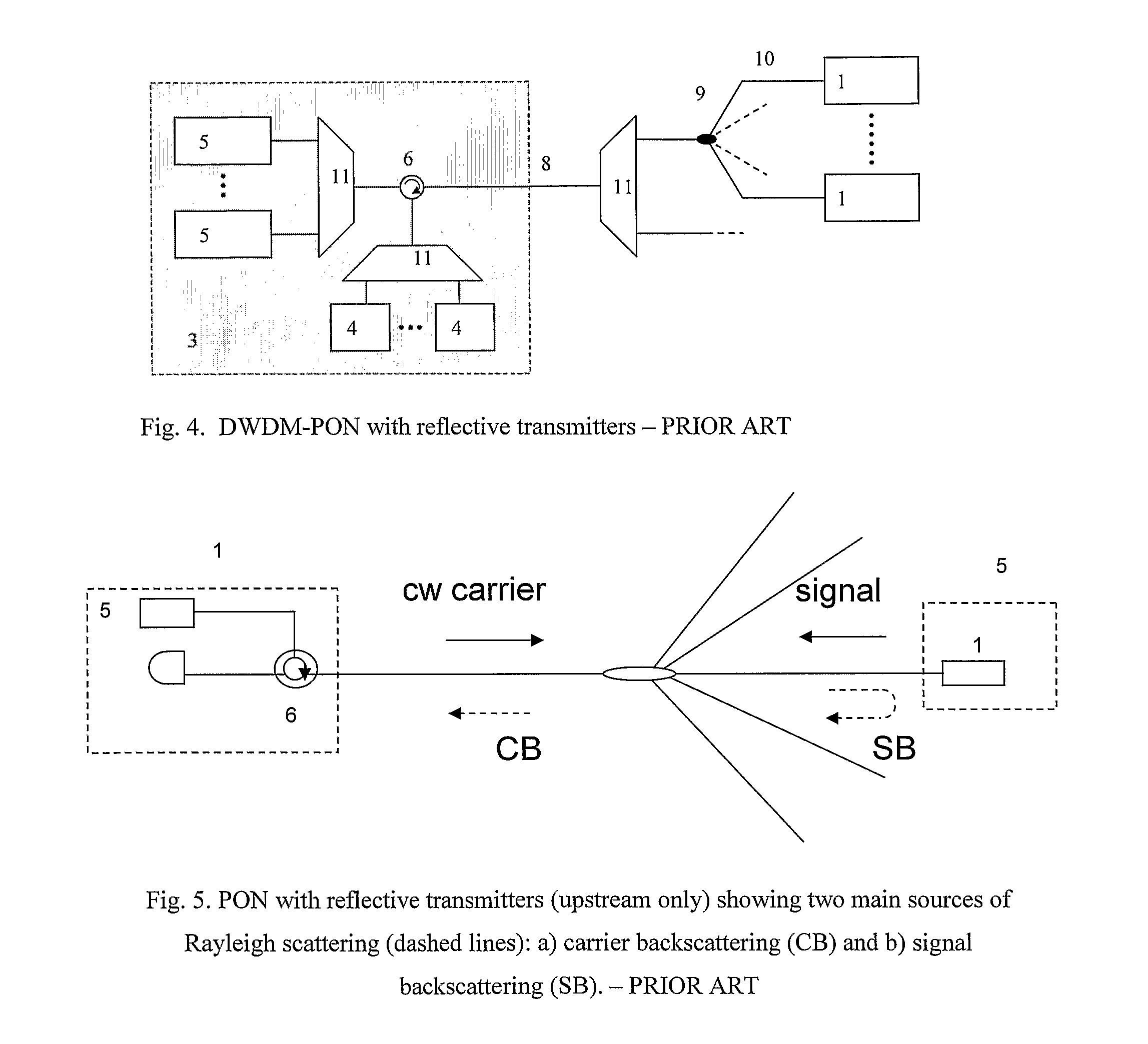Reflective optical transmitter
a technology of optical transmitters and optical fibers, applied in electromagnetic transmitters, fiber transmission, electromagnetic transmission, etc., can solve the problems of unnecessary additional cost to the device, complex design, and inability to achieve any benefit, and achieve the effect of suppressing intensity and interferometric nois
- Summary
- Abstract
- Description
- Claims
- Application Information
AI Technical Summary
Benefits of technology
Problems solved by technology
Method used
Image
Examples
Embodiment Construction
Brief Description of the Drawings
[0034]The invention will be more clearly understood from the following description of some embodiments thereof given by way of example only with reference to the accompanying drawings, in which:
[0035]FIGS. 1 to 5 are diagrams concerning the prior art, as set out above;
[0036]FIG. 6 is a diagram showing schematically the structure and internal components of an optical transmitter of the invention;
[0037]FIG. 7 is a diagram showing the carrier and modulated signal propagating through the various sections of the transmitter;
[0038]FIG. 8 is a plot showing simulation results demonstrating advantage of the invention concerning the reduction of the output signal dynamic range compared to the input carrier dynamic range;
[0039]FIGS. 9 to 11 are plots showing simulation results demonstrating advantages of the invention concerning the reduction of intensity and interferometric noise and the reduction of the distortion of the output signal; and
[0040]FIGS. 12 to 15...
PUM
 Login to View More
Login to View More Abstract
Description
Claims
Application Information
 Login to View More
Login to View More - R&D
- Intellectual Property
- Life Sciences
- Materials
- Tech Scout
- Unparalleled Data Quality
- Higher Quality Content
- 60% Fewer Hallucinations
Browse by: Latest US Patents, China's latest patents, Technical Efficacy Thesaurus, Application Domain, Technology Topic, Popular Technical Reports.
© 2025 PatSnap. All rights reserved.Legal|Privacy policy|Modern Slavery Act Transparency Statement|Sitemap|About US| Contact US: help@patsnap.com



